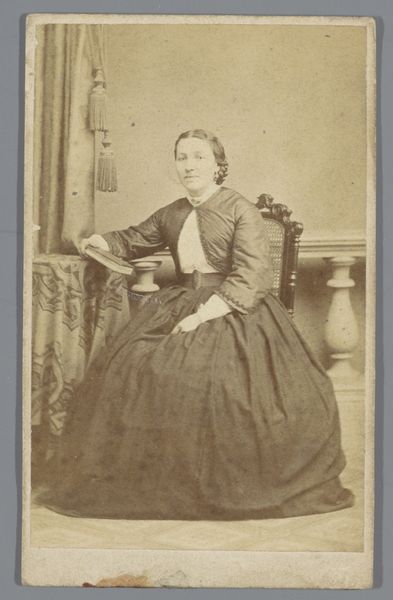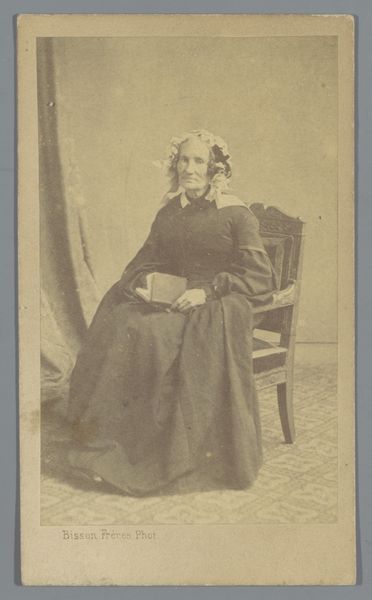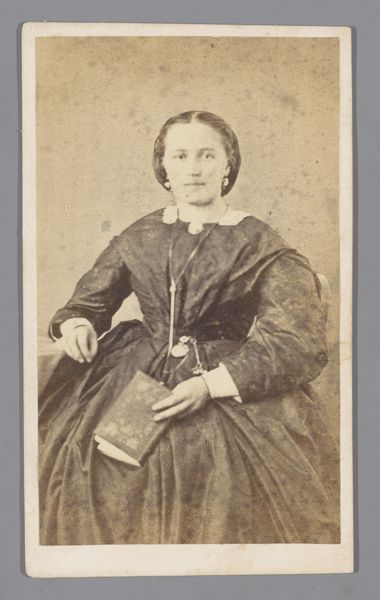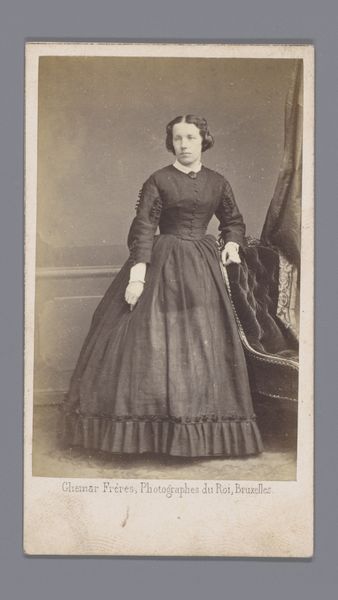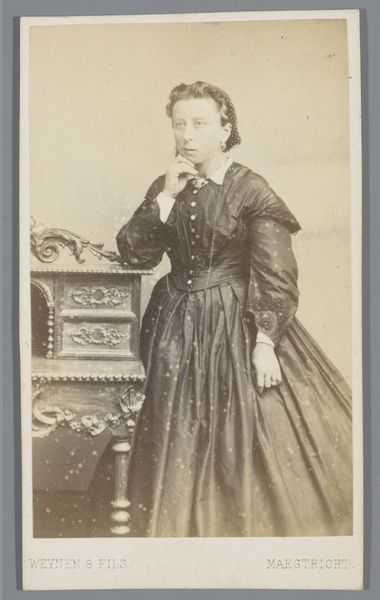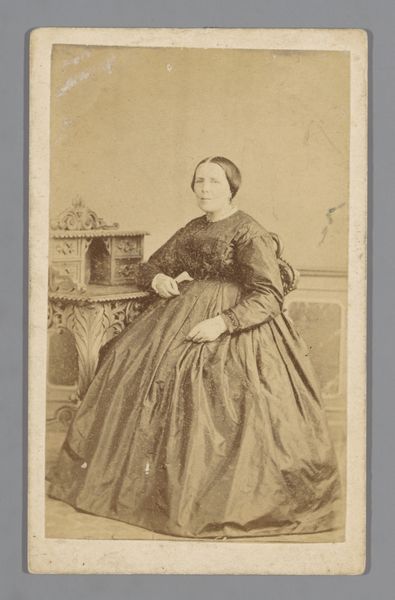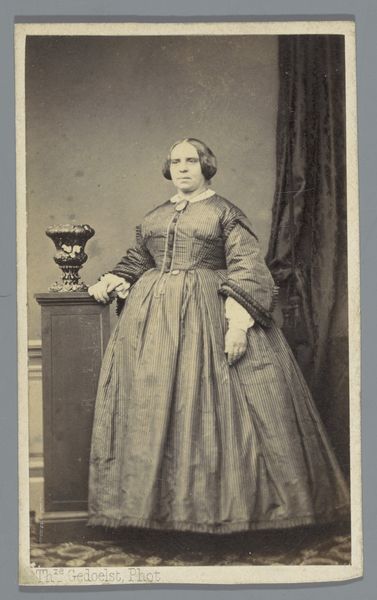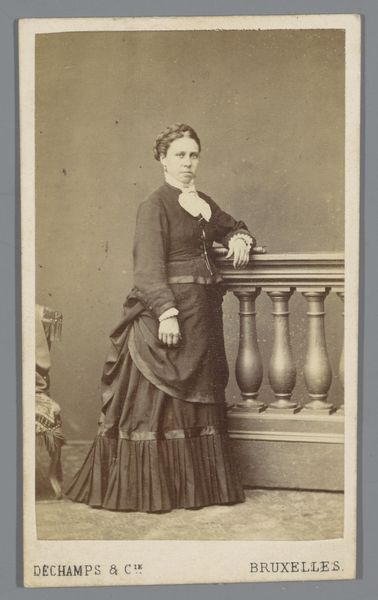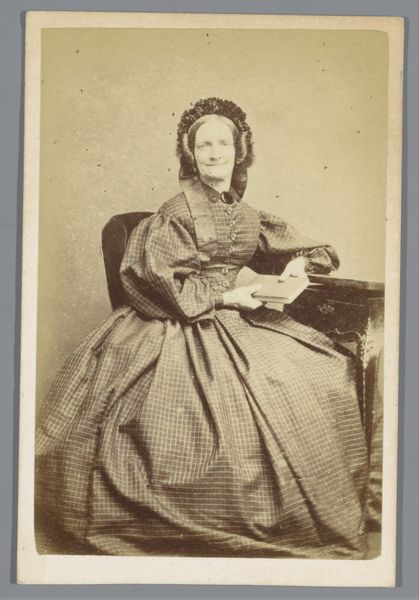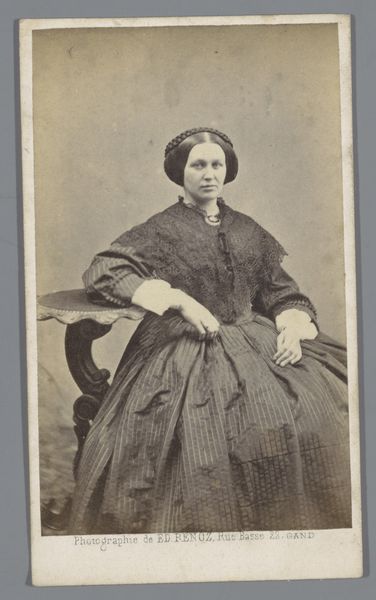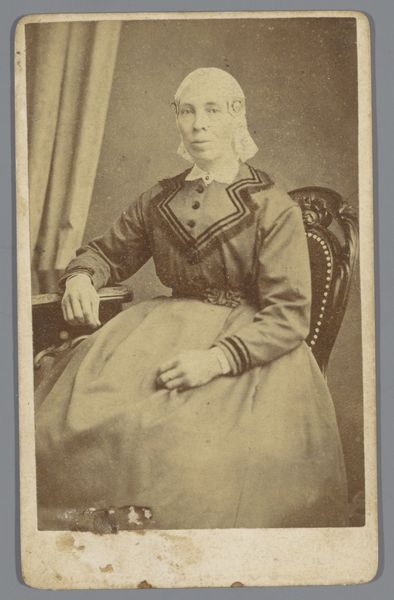
Portret van een onbekende vrouw met een muts, zittend aan tafel 1853 - 1889
0:00
0:00
#
aged paper
#
vintage
#
reduced colour palette
#
photo restoration
#
personal sketchbook
#
historical fashion
#
unrealistic statue
#
old-timey
#
19th century
#
watercolour illustration
Dimensions: length 105 mm, width 61 mm
Copyright: Rijks Museum: Open Domain
Editor: So, here we have "Portrait of an Unknown Woman with a Cap, Sitting at a Table" by Franz Wilhelm Deutmann, dating sometime between 1853 and 1889. It's currently at the Rijksmuseum. It feels like a glimpse into a very different era, almost a somber, formal affair. How do you interpret this work, considering its historical context? Curator: The somber mood you observe is characteristic of photographic portraiture during the mid-to-late 19th century. The sitters were often common people adopting their best attire for posterity, for legacy building. The stiffness you sense wasn’t necessarily about mood; it had a lot to do with lengthy exposure times required in early photography. Can you imagine holding a pose perfectly still for several minutes? Editor: That’s a very good point; I hadn’t considered the technical challenges. Did the democratization of portraiture change who was seen and how they were represented? Curator: Absolutely. The advent of photography allowed the middle and lower classes to participate in portraiture, a practice formerly reserved for the wealthy. The fashions shown--especially in terms of elaborate hats--were powerful social symbols for small subgroups and regions in society. Consider the way she is represented: Do you find this formal pose a kind of cultural construct in and of itself? Is this constructed "ideal" only made possible via the invention of photography? Editor: I suppose that’s true. The photo, made available for popular purchase, almost established and formalized new social strata through self-representation. I wonder how people at the time felt about this more egalitarian imagery? Curator: It likely disrupted established social hierarchies in subtle ways, challenging traditional forms of aristocratic portraiture and providing avenues for self-representation for previously marginalized groups. That is the true and accessible art history we've opened by reconsidering photography and the invention of the portable photograph! Editor: That's fascinating. It’s incredible to think about the social impact of this “simple” portrait. I am really rethinking its significance now.
Comments
No comments
Be the first to comment and join the conversation on the ultimate creative platform.

